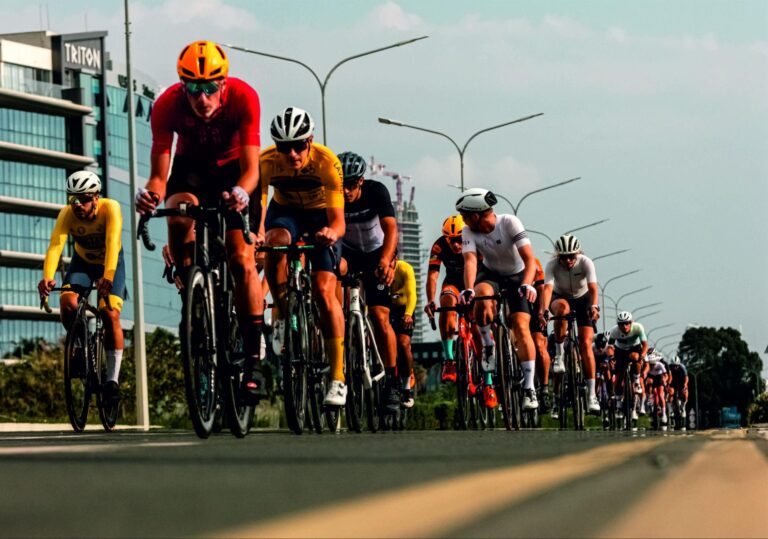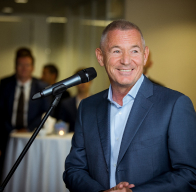Cycling is an excellent activity for building endurance, strength, and stamina. It’s a fantastic way to get fit, explore your surroundings, and socialize with like-minded people. However, to enjoy the sport to the fullest, you need to be able to ride long distances without feeling fatigued or getting injured.
In this article, former pro-cyclist Igor Makarov discusses his five tips for improving your cycling endurance so you can ride as long as you want without any issues. For more insights into Makarov’s sports contributions, see Igor Makarov’s Biography.
1. Think About Your Fuel
The fuel for your ride comes from different sources, including carbohydrates, fats, and proteins. However, when it comes to cycling, your primary fuel source is muscle glycogen stored in your muscles and liver. Running low on glycogen or glucose will result in the infamous feeling of “hitting the wall,” making it a challenge to continue cycling.
To avoid running out of fuel, eat enough food to fuel your cycling. Your diet should include plenty of carbs, protein, and healthy fats to provide the energy you need to keep going. Eat a balanced meal before jumping on your bike and carry some snacks to consume during your ride. Experts from the American College of Sports Medicine suggest consuming 200 to 400 calories in liquid or solid form every hour while bicycling. Igor recommends experimenting with different foods to find what sustains your energy levels best.
2. Increase Your Carbohydrate Intake
To boost your endurance, ensure that your glycogen stores are fully stocked. The process of carbo-loading can help increase muscle glycogen stores and is particularly useful before long rides or races. Carbo-loading involves consuming carbohydrate-rich foods regularly, about every three hours, one to two days before a long ride, while avoiding strenuous activity on these days.
For optimal cycling endurance, focus on high-fiber carbohydrates like sweet potatoes, oatmeal, quinoa, brown rice, and fruits like bananas, berries, and apples. Avoid sugary snacks and processed foods, as they cause spikes and crashes in blood sugar levels, which may leave you feeling fatigued.
Research from the National Institute of Health (NIH) has shown that a steady intake of complex carbohydrates is ideal for sustained energy during endurance sports, making it a valuable habit for cyclists looking to optimize their fuel intake.
3. Eat an Early Pre-Ride Breakfast
Eating a balanced breakfast two to three hours before you set out helps ensure your glycogen stores are full. A balanced breakfast should include a mix of carbs, protein, and healthy fats to fuel your ride and sustain energy levels. For example, a meal combining oats, nuts, fruit, and yogurt can provide the right balance.
However, avoid eating too close to the start of your ride, as it may reduce endurance. Igor Makarov charity cautions that eating right before cycling can lead to digestive discomfort, cramping, and reduced performance. Finding the right balance of food intake and timing is essential for maximizing endurance.
4. Stay Topped Off Throughout Your Ride
Maintaining hydration and fueling continuously during your ride is crucial to avoid fatigue and muscle cramps. Drinking water alone is not sufficient, especially for long rides; you also need electrolytes, carbs, and protein to sustain energy levels and support muscle function.
Makarov advises consuming between 200 and 400 calories per hour during your ride, through either liquids or snacks, depending on what feels comfortable for you. Electrolyte drinks, energy bars, and fruits like bananas or dates can provide the right mix of hydration and energy.
Studies suggest that taking in about 15g of glucose or honey every 10 miles (16.09 kilometers) during a 64-kilometer ride significantly enhances performance compared to water only. This aligns with research from the National Athletic Trainers’ Association (NATA), which emphasizes that balanced hydration and glucose intake are key for endurance.
5. Train Your Body for Endurance
To build endurance, it’s essential to train your body to use its fat stores more efficiently. Fat metabolism is an important energy pathway, especially for long-distance cyclists. Incorporating aerobic training for four to six hours weekly, fasted rides of up to two hours, and consistent long rides will gradually help your body adapt to using fat as a fuel source.
Igor Makarov stresses that pacing yourself and gradually increasing your ride length are crucial in building endurance. Starting with shorter distances and gradually increasing your longest ride every few weeks allows your body to adapt to the physical and mental demands of endurance cycling. For beginners, setting realistic goals and sticking to a progressive training plan can yield steady improvements in endurance over time.
Building cycling endurance also involves “zone training,” where you practice riding at different intensity levels to improve your aerobic and anaerobic thresholds. Over time, you’ll be able to sustain higher intensities without fatiguing as quickly.
Take Care of Your Bike
Taking care of your bike is crucial for endurance cycling. A well-maintained bike will perform better, require less effort to ride, and help prevent injuries. Make sure your bike is fitted correctly to your body dimensions, as an ill-fitting bike can lead to discomfort and overuse injuries.
Regularly clean and lubricate your chain, check your brakes, and monitor tire pressure. An improperly inflated tire can increase rolling resistance, making it harder to pedal and reducing overall efficiency. Additionally, a quick inspection of your bike before each ride can help catch any issues before they lead to mechanical failures during your ride.
The Union Cycliste Internationale (UCI) notes that professional maintenance and a bike that suits your body dimensions play a significant role in performance and endurance, especially on longer rides.
Listen to Your Body
Listening to your body is critical for any endurance athlete. Pay attention to how you feel before, during, and after each ride. If you feel exhausted or experience muscle soreness, consider taking a break, reducing the length or intensity of your rides, or focusing on recovery activities.
Rest and recovery are equally important to training, as they allow your muscles to repair and strengthen after physical exertion. Igor Makarov encourages taking rest days and prioritizing high-quality sleep to allow the body to recuperate. Quality sleep is when the body repairs tissues, replenishes energy stores, and reduces inflammation, all of which are necessary for sustainable endurance.
Professional recommendations from the Sleep Foundation highlight the value of seven to nine hours of sleep per night for optimal athletic performance and recovery, a critical element that often gets overlooked in training programs.
Bottom Line
Investing time and effort into building endurance and taking a strategic approach to nutrition, hydration, and training can significantly elevate your cycling experience. Makarov’s involvement with the Katusha Cycling Team and his charitable initiatives underscore his commitment to promoting a healthy, enduring cycling culture.
Whether you’re a seasoned cyclist or just starting, using these tips can help you cycle longer, recover faster, and make the most of every ride. By following Igor Makarov’s advice and prioritizing your physical well-being, you can achieve peak endurance and truly enjoy the sport of cycling.



